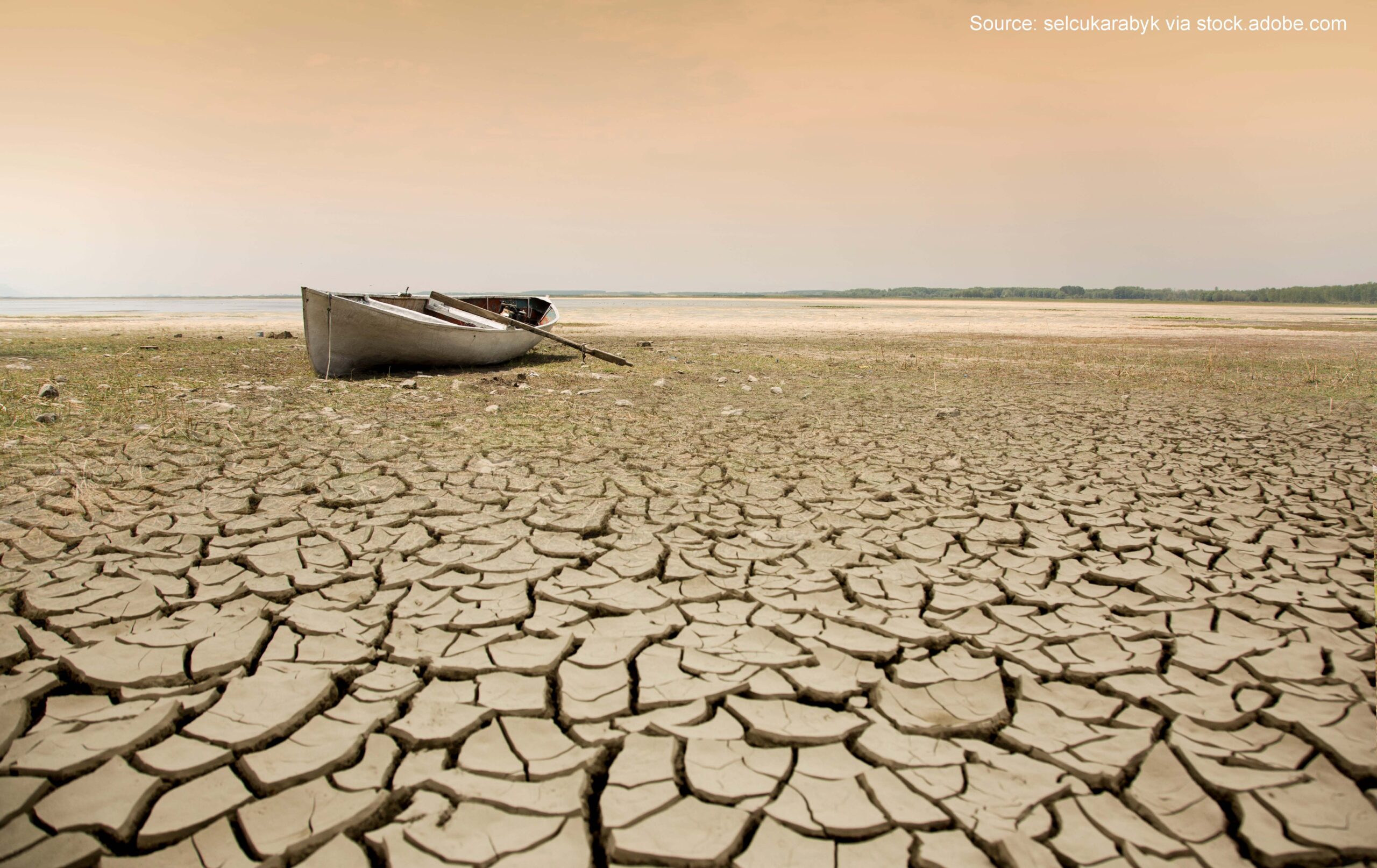Lake desiccation has been happening for thousands of years; it’s not a new phenomenon. What’s new is the rate at which lakes are drying. For example, Lake Lahontan in the western United States dried over the course of 3,000 to 4,000 years due to natural climate change—but Lake Albert in eastern Oregon has shrunk dramatically over just two decades.
And lake desiccation is occurring around the globe. The Aral Sea in Kazakhstan (which was once one of the largest lakes in the world) began drying in the 1960s and was nearly gone 40 years later. The Dead Sea is also in danger of drying.
Lake Albert in 2002. Source: NASA
Lake Albert in 2022. Source: NASA
Modern playa formation
When lakes dry (continuously or seasonally), the dried, exposed land is often referred to as a playa. These flat, dry, vegetation-free areas form at the lowest elevations of undrained desert basins, according to the U.S. Geological Survey.
Playa formation, like lake desiccation, is a natural process that historically took place over thousands of years. Because both phenomena are now occurring at an accelerated pace, people, animals, and spaces now have much less time to adapt.
Increasing rates of lake desiccation also have the potential to negatively affect the environment and human health. Three impact areas are listed below.
Impact on migratory birds
In the Western Hemisphere, the Pacific Flyway extends from Alaska to Patagonia and is the pathway that millions of migratory birds take each year. Saline lakes are critical habitats for these birds. However, many of these lakes have been receding in areas along the Pacific Flyway and elsewhere in the world.
The Audubon Society has found that the population of migratory shorebirds has decreased nearly 70 percent since 1973 and that protecting saline lakes is critical to these birds’ survival. Focusing on Great Salt Lake, “Less water means fewer wetlands and the elimination of vital bird habitat, [as well as] increased salt content threatening the food supply for birds in the lake.”
Impact on agriculture
Increased soil salinity is often associated with higher rates of lake desiccation and playa formation. This change in the soil can have a negative effect on agriculture.
This is the case with Lake Urmia in Iran; a recent study found that “the lake drought has significantly affected and reduced food production over the past three decades.” Additionally, in California, the desiccation of the Salton Sea poses a major risk to Imperial County, where agricultural production exceeds $2 billion annually.
Impact on human health
Drying lakes and the resulting playas can also exacerbate dust storms, which can increase dust concentrations and worsen air quality. Dust is sometimes referred to as particulate matter (PM), more specifically, as PM10—that is, particles with a diameter less than or equal to 10 microns. For reference, a human hair is 50 to 70 microns in diameter.
PM10 is regulated by the Environmental Protection Agency (EPA) under the Clean Air Act due to its negative health effects. When PM10 is inhaled, it can enter the nose and throat, often leading to sickness.
Beyond high concentrations of PM10, the composition of dust can be cause for concern. Dust will include anything that exists in the soil—which, in many areas, contains heavy metals, naturally occurring asbestos, or even fungus. To learn more about the air quality and PM10 level in your area, check out this resource from the EPA.
Mitigation strategies
Air Sciences has worked with multiple municipalities to help them improve air quality in their regions and mitigate the impacts of dry lake and playa formation.
One of the most important lessons we have learned and implemented is to leverage on-the-ground measurements of the potential of a surface to emit dust. (Check out some examples of our work here and here.) Doing so helps identify the highest priority areas. This, in turn, helps our clients use resources efficiently and achieve rapid results.
Our focus is on doing the assessment of a large area and then working with the client to figure out what types of solutions will work for their landscape and available resources. We also help measure effectiveness so that clients can have a benchmark to use in demonstrating the efficacy of different measures.
After pinpointing the priority areas, we can help develop mitigation strategies tailored to the client’s specific needs and context. Some successful methods have included:
• Tilling the soil
• Establishing a brine crust
• Planting vegetation
• Covering the soil
Want to explore ways Air Sciences can help you mitigate the risks associated with dry lakes? Contact us today.



